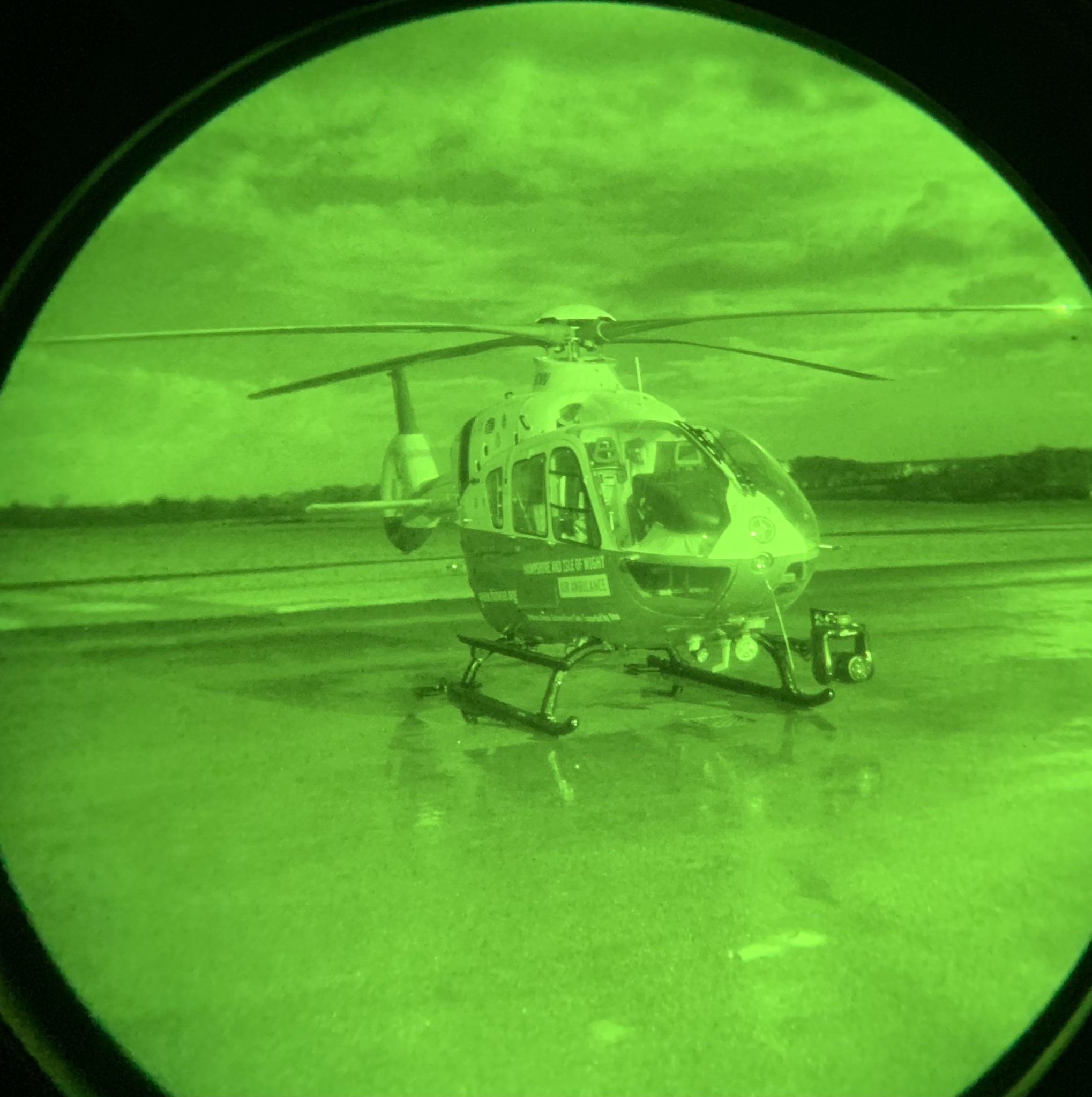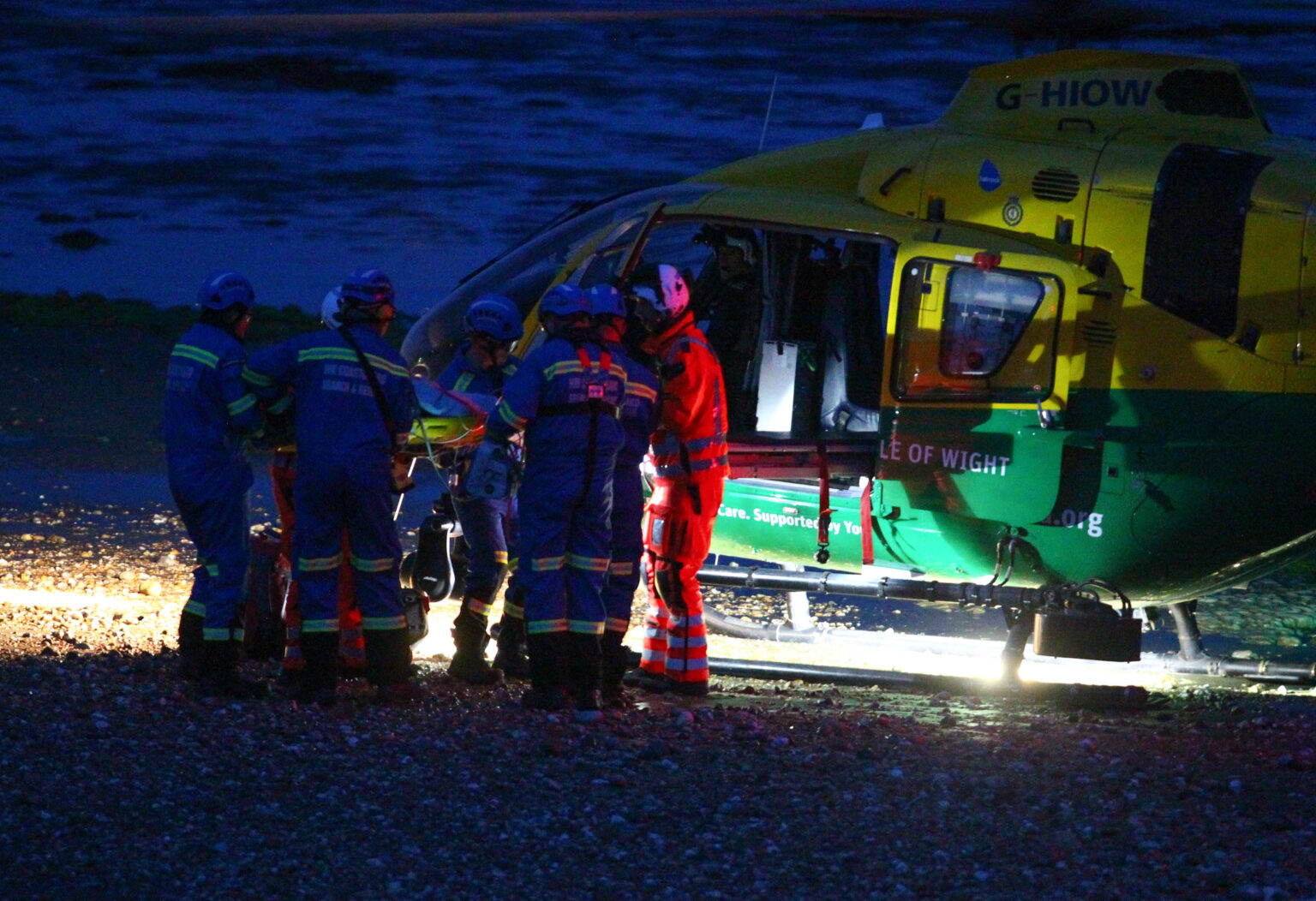Seven years to the day (28 January 2016), we took off on our first emergency mission by air at night. This huge advancement for our service has helped us be there for thousands of patients who have needed our help. And it is only possible thanks to your support.
Since that first night flight in January 2016, we have flown a total of 843 hours under the cover of darkness. And in 2022 we responded to 547 call-outs at night – 30% of our total missions.
Is it safe to fly at night?
Absolutely. Our helicopter, the Airbus H135, is fully equipped and optimised for night operations, allowing our teams to land at the scene of an incident, in the dark, effectively bringing the hospital to the patient. Previously, we were only able to fly between hospitals from lit helipad to lit helipad.

The team face different and complex challenges when flying and landing at night. In daylight, the pilot can land in an area roughly the size of a tennis court – at night, this area increases slightly.
To keep our crew as safe as possible, they receive extensive night-flight training and use Fenn Night Vision Goggles and a Trakka high intensity searchlight to help find a suitable landing site in unlit locations.
Your impact
One of those night missions last year was Janine, who we flew to when she fell nine feet off a sea wall while she was on holiday with her husband, Trevor, on the Isle of Wight. Janine sustained a fractured skull, a bleed on the brain and a fractured spine. The injury to her spinal cord means Janine will be in a wheelchair for the rest of her life.

The team landed the helicopter on the beach and performed a ‘hot load’ – loading the patient whilst the engines are on and the rotors running.
Without your support allowing us to fly at night, Janine wouldn’t have had access to our specialist critical care.
“Trevor is sure I wouldn’t have made it without the Air Ambulance.”


 Donate
Donate






